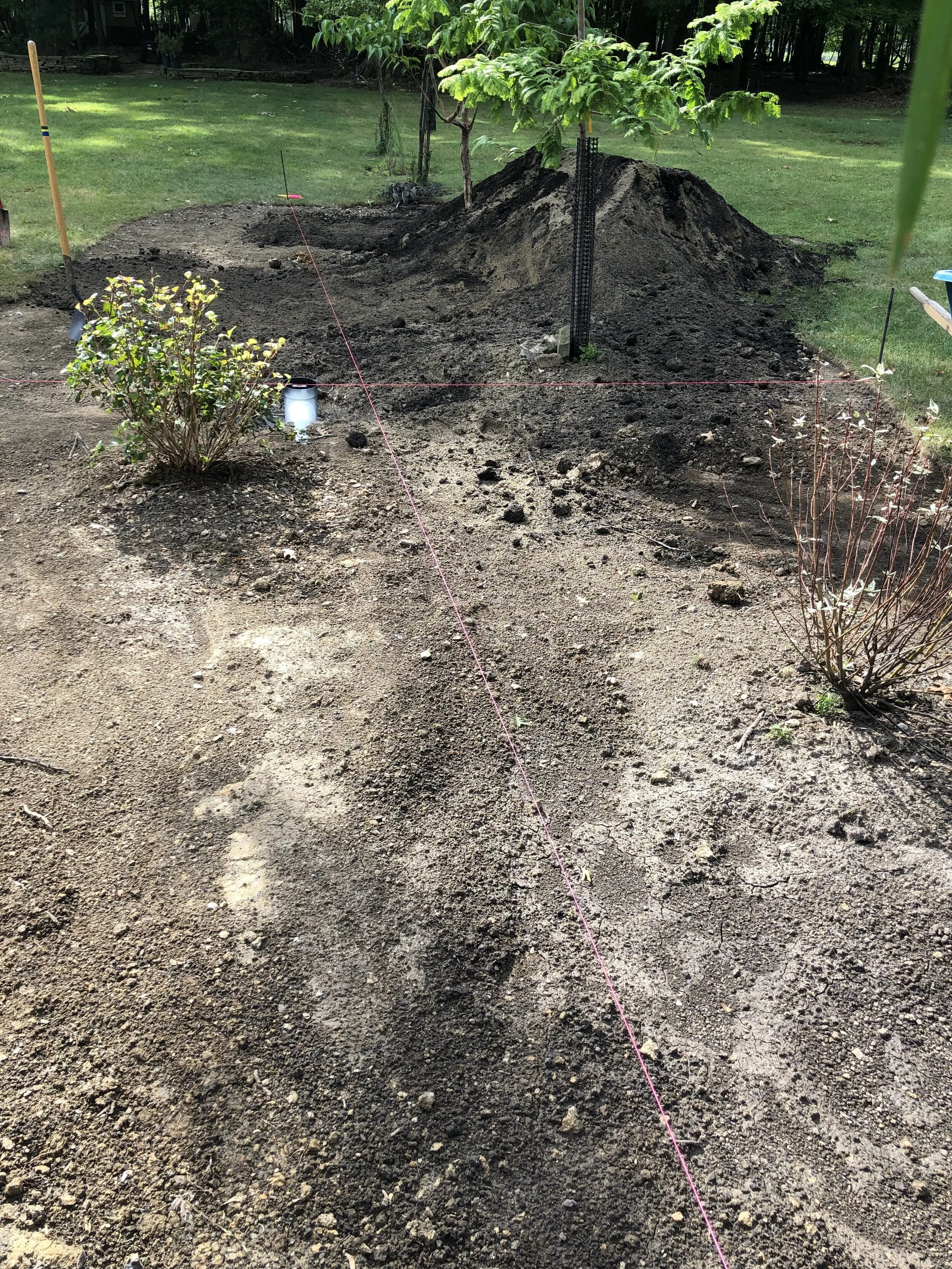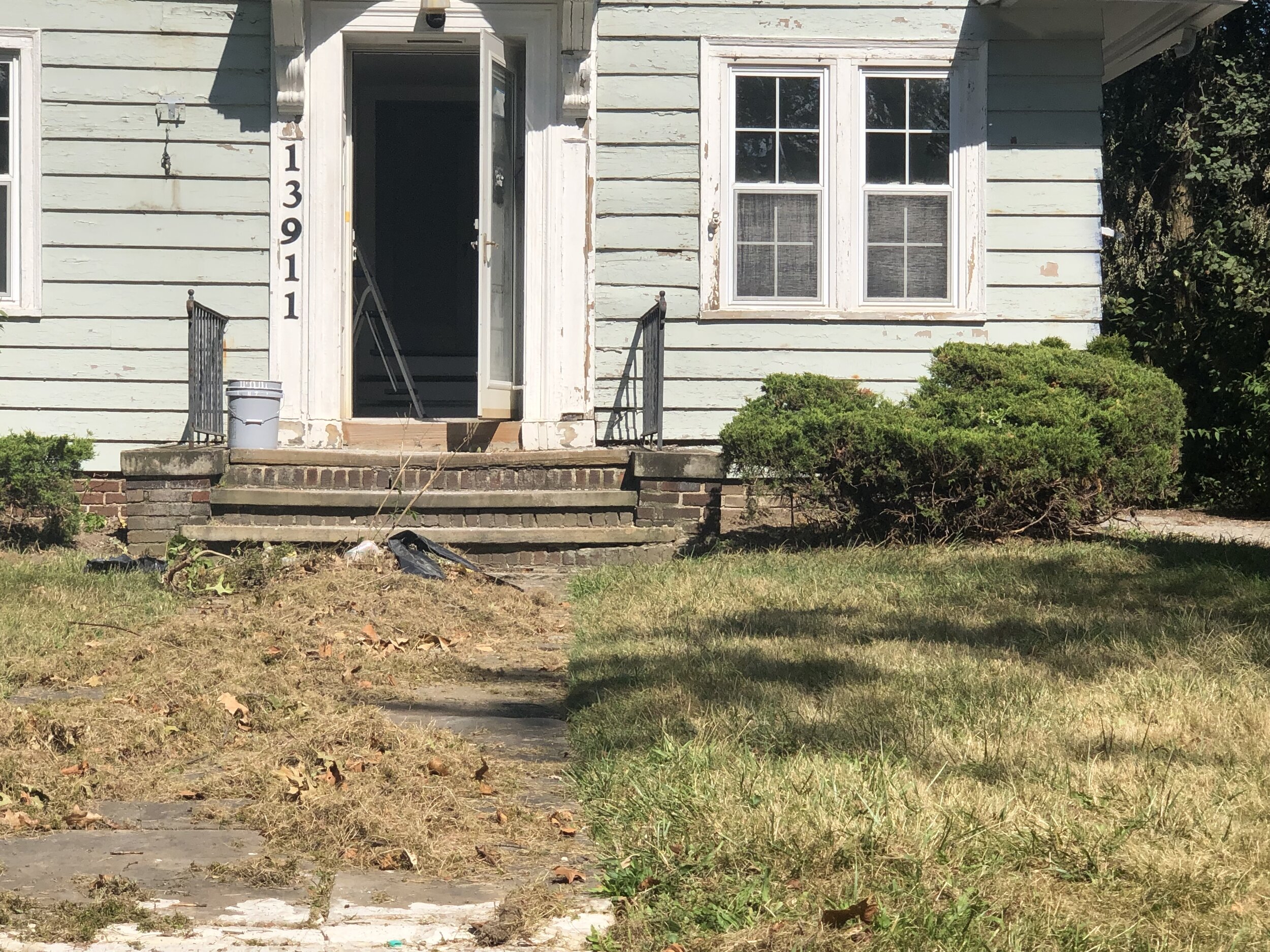
Here we’ve removed turf and are excavating the heavy clay.

After running the calculations and observing flooding events, as well as considering the homeowner’s landscape preferences, the transition began.

The existing drain was previously at the low point of the property line. We modified it to be at the highpoint of the rain garden and to serve only as an overflow.

Numerous measurements were taken throughout.

The special soil blend was added slowly.


The ‘homeowner’ provided numerous inspections!

Native plant material suitable for this type of application was selected and the homeowners’ ideas incorporated throughout.

The ‘homeowner’ worked very closely with us to ensure proper placement and professional installation techniques!

This relaxation station needed some help!

The original paver patio is underneath the weeds and rose-of-sharon seedlings.

Cleanup and cleanout begins.

Weeding continues before we begin to excavate and remediate the soil!

Brick by brick.

Stone by stone.


Now that the area is clear we need to reassess it’s layout and utility.

To maximize usable area we decided to scooch that entrance to the side.

It was also a good to time shore up the wall on the inside and get everything nice and straight.

Now we can layout the new seating area.

Ensuring proper drainage and avoiding settling was important. We excavated and installed a deep layer of compacted aggregate and crushed limestone.

We ensured all of the paver joints were uniform and tight before we finished things off with repurposed bricks saved from another area of the landscape.

Heavy rains made for a muddy day but there was pooling on or around the new patio thanks to proper grading, soil remediation, and sound installation techniques.
More soil and mulch will be added and we’re currently designing the landscape treatment for this area…stay tuned!







